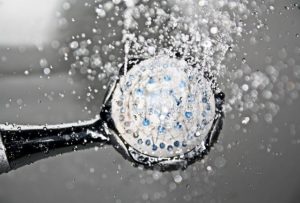showers are great! because they save both time and water, ever since showers came into existence they have been a real game-changer since showers generally use a lot less water when compared to bathtubs, but most people wonder, where does shower water go after you take a shower and this article aims to address exactly that, read on!
Where does shower water go?
in Short, the shower water drains down through the pipes into a sewer system. The wastewater treatment plant is located near the ocean, but the water does not necessarily leave the state. It often leaves via the Mississippi River to a regional treatment facility that also handles wastewater from other states.
Shower water goes down a drain that connects to the sewer line. The drain can be made of PVC pipes, metal pipes, or a mix of both. Both types have advantages and disadvantages when it comes to installation and cost.
PVC pipe is somewhat flexible and is less expensive than metal piping; however, it does not last as long when exposed to heat as metal piping does. Metal piping also tends to be more aesthetically pleasing because it doesn’t mark surfaces with which it comes into contact like PVC sometimes does.
You may also have a “wet-well” in your home just for the shower alone, which has two tanks: one for hot water and another for cold water. The hot water is heated by a solar panel that has a heating element and the cold water is heated by an electric heater.
The hot water from the solar panels then gets pumped into your house through a pipe. In this situation you don’t have to worry about pipes and, in fact, the whole system is designed much like an irrigation system in the way it is laid out. A lot of your bathroom fixtures — all of them — are connected to sewer lines and drain pipes. You’ll find faucets on almost every wall: tubs, cabinets, toilets, bidets (you know what they are), showers, and sinks.
Does shower water and toilet water go to the same place?
No. In fact, the toilet is designed to handle more water than a shower and it’s treated differently. The toilet uses what is called “slow-flush” technology to reduce the amount of water needed to transport waste.
Shower water goes down a drain that connects to the sewer line. A typical bathroom has drainpipes for each fixture bidets, toilets, tubs, and showers. The shower drainpipes are connected to a Y-shaped pipe called a “drain stack” that has an outlet on both branches of the Y.
This makes it possible to connect another fixture to the drain stack in the future if needed. This is actually as far as most homeowners need to know. The rest of the system is handled by plumbers.
But some homeowners are interested in how a toilet works and how toilets, showers, and other bathroom fixtures work together so we’re going to tell you about that, too. The top section of the Y-shaped pipe, called a “wet vent”, connects to your home’s drain pipes. The bottom branch of the Y is connected directly to the sewer line below the ground.
Does shower water mix with toilet water?
The other side of the wet vent goes into a flat pipe that runs horizontally along the top of your home (it’s just under the roofline). The flat pipe has many holes in it and water from each hole drains down through a different part of your home, including your bathtub drainpipe. It also goes into a separate drainage system for your toilets and sink.
Is shower water recycled?
So now you probably want to know, “Is shower water recycled?” As we mentioned earlier, the wastewater treatment plant is located near the ocean and the water undergoes at least two stages of treatment.
First, it is treated with chlorine to kill bacteria — you don’t want that in your pool! The second stage is a flocculant process that removes sediment from the water.
After this, more chemicals are added to remove the color from materials that have color, and some nutrients are added back into the water (materials like phosphorous and nitrogen) to keep algae from growing.
The water is then pumped into rivers and lakes for downstream users to use. In other parts of the country, the water is pumped back into groundwater supplies.
Can shower water go into the septic tank?
A home with an effluent (sewer) system connected to a septic tank does not need to worry about the wastewater treatment plant and its effects on the septic tank.
The effluent treatment facility usually takes care of everything for you — but there are some things that homeowners do need to know. Water from your bathtub drains down through the rubber pipe and into a 1-inch pipe called a “sump pump” which pumps the water up into the first part of a vent pipe. This part of the vent pipe is called a “wet vent” and it is not connected to any other pipes.
Septic tank vs wastewater treatment plant
Septic tanks are used to remove solid matter from wastewater, while treatment plants use various processes (aerobic digestion or chlorine disinfection) on the liquid portion.
The difference between a septic tank and a wastewater treatment plant is that the former removes solid matter while the latter treats both liquids and solids.
A septic tank is a container that holds sewage (liquid or “black water”) until it can be pumped out onto land where it is absorbed into the ground. A septic tank consists of two chambers: one for wastewater and one for scum. The two chambers are separated by an intermediate chamber called an effluent filter (or clarifier) which contains baffles and baffle plates that cause the flow to separate into three layers: floating scum layer at the surface, bulk liquid in the middle, and settled solids at the bottom. The final layer of settled solids are called sludge and are removed periodically from the bottom of the tank with a vacuum truck or pump.
Conclusion
It is good to know that there is a system in place that regulates waste disposal in the most efficient manner possible, and collecting the shower water together with other bathroom water and treating it before disposing them down on the ground is a smart move, and most people do not even realize it! I hope this article shed a light and helped you understand where shower water ends up

As the resident shower expert at ShowerJournal.com, Wayne Lee loves to share the helpful tips and tricks he’s picked up over the years during his job as a handyman.

